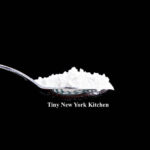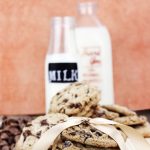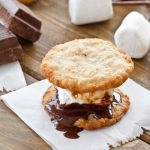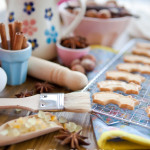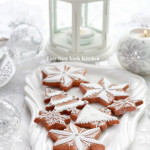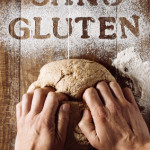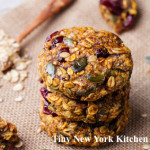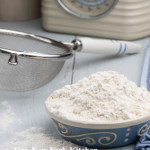Cooking With Cornstarch
More and more people are swapping starches for flour in their recipes. If this is something that you have thought about doing then read on to find out more about cornstarch and its uses.
Cornstarch is one of the most versatile starches that there is. Extracted from the starchy endosperm of corn, its white powdery substance is virtually flavorless. It’s a nice ingredient for thickening puddings, soups, pie fillings, and many baked goods recipes. When added to cake, cookie, and shortbread recipes, cornstarch helps create a crumbly and tender texture.
Commercially, cornstarch is often used as an anti-caking agent. When added to packaged goods like shredded cheese, cornstarch coats the cheese and helps to absorb moisture that would otherwise cause spoiling. The absorption process also helps prevent food from clumping over time. Additionally, it is used when making sugars, such as corn syrup.
When cooking with cornstarch, it is best to mix this ingredient into a recipe that is at room temperature. When cornstarch is added to too hot of a mixture, the heat can cause unwanted clumping. Before adding any starch to a recipe, it’s recommended first to make a slurry. To make a slurry, simply mix cornstarch with a cold liquid such as water. This mixture will create a paste-like substance, that you can then add to the desired recipe. Using this slurry method will ensure that the cornstarch is evenly distributed throughout the recipe and not broken down by the heat. It is not recommended to freeze sauce and soups that include cornstarch. Freeing cornstarch can cause the molecules in the starch to break down, and once thawed, the liquid will not hold the same texture as before.
For Thickening:
Cornstarch is often used as a thickening agent when added to soups, stews, and gravies. Denser than flour, less cornstarch is needed to thicken a liquid to the desired consistency.
When cornstarch is added to a recipe, the starch molecules work to absorb water and thicken the mixture. When heated, those molecules swell and consume even more of the liquid in the recipe. Upon thoroughly cooking, the starch in the mix will have expanded size to ten times its size. Once the mixture cools, these same molecules will set. The setting of these molecules can help further solidify the dough, which makes cornstarch a great thickening agent for gooey fillings like pies and pudding. However, this molecule expansion is limited. While a cornstarch enriched recipe can be brought close to boil, it should never be fully boiled. When cornstarch is exposed to too high of temperatures, the starch molecules will begin to deflate, and the mixture will return to its runny state.
For Baked Goods:
Cornstarch not only acts as a thickening agent, but it can also be used in baked goods like cookies, brownies, and cakes. If you’re looking for more structure in your favorite dessert recipe, then you may want to try using cornstarch. Combining cornstarch with other flours can help soften the rigid proteins of the flour, resulting in a light and chewy dessert. Similar to when adding cornstarch to a soup or pudding, if adding cornstarch to a dessert batter, it should first be turned into a slurry. This will ensure that all of the molecules remain intact and that the starch is evenly distributed. Upon adding cornstarch to your baked goods, evaluate it as you would a soup. Has your batter reached the desired consistency? If not, then a bit more cornstarch may be needed. Once your dough looks perfect, bake your dessert like usual. The result should be light, fluffy, and delicious desserts.
Anti-Caking Agent:
Have you ever wondered why your powder sugar ingredients include cornstarch? Cornstarch acts as an anti-caking agent. By keeping moisture and condensation from reaching whatever it is mixed with. It helps to prevent lumps in finely ground foods like sugar. Cornstarch isn’t just used to ward off moisture from sugar. The next time you’re in the grocery store take a look at how many products list cornstarch as an ingredient. From gravy granules to shredded cheese, you might be surprised by the wide variety of foods that cornstarch is added to.
Frying With Cornstarch:
Cornstarch can also be used as a coating for fried foods. While cornstarch shouldn’t be used as a substitute for flour in baked goods, you can very easily substitute it in for flours when coating fried chicken, fish, or other items you’re frying. Not only will cornstarch work in the same way that flours do, but it will hold up better against sauces and absorb less of the frying oil. Less oil means less fat in your meal.
When frying food with cornstarch, I recommend that you coat the items lightly. Applying a light even coat to your food will ensure that it results in a crispy texture. When too much cornstarch is added, the coating often turns out gummy rather than crunchy. For the perfect, gluten-free fried food, consider blending cornstarch with a gluten-free flour like almond flour. This will help create a more breaded result, similar to wheat flour.
©Tiny New York Kitchen © 2021 All Rights Reserved
Tips For Better Cookies
Holiday baking time is a fun time of the year with the kitchen filled with delicious aromas and an array of treats to share with friends and family. No matter what style or flavor is your favorite, follow these steps for the best cookies you’ve ever baked, every time.
Use Room Temperature Ingredients
Get eggs and butter out of the refrigerator early, so they blend better in your cookie dough. Your cookies will have better texture and volume when all the ingredients are evenly incorporated.
Measure With The Spoon & Sweep Method
Use a spoon to add dry ingredients like flour to a dry (flat edged) measuring cup, then level off with the back of a knife. This method gives you the right amount of flour for the recipe, so your cookies aren’t too dry or dense.
Chill Dough Before Shaping Or Slicing
Refrigerate at least 1 hour or even overnight, so the dough is easier to work with and cookies hold their shape. Giving the ingredients time to meld makes your cookies taste better too.
Flour Your Cookie Cutters As You Go
Keep a small bowl of flour next to your work surface when rolling and shaping cutouts. Dip cookie cutters in flour in between stamping so they release easily and don’t stick to the dough.
Use Parchment Paper To Line Baking Sheets
Ensure that your cookies won’t stick to the baking sheet by using parchment paper liners. Parchment can be used more than once depending on the style of cookie, then can be replaced for more baking and easier cleanup.
Rotate Sheets Halfway Through Baking
All ovens have hot and cold spots. Help cookies bake evenly by switching the sheets between the top and bottom oven racks or rotating the sheets 180 degrees on the rack halfway through the baking time.
Rest On Baking Sheets For 1 To 2 Minutes Before Moving To Cooling Rack
When cookies are removed from the oven, they can still be soft and molten on the inside. Let the cookies settle and cool for a minute or two before transferring to a wire cooling rack with a thin spatula.
Cool Baking Sheets To Room Temperature Between Batches
Unbaked dough can start to melt immediately on a hot baking sheet, causing cookies to spread and overcook in the oven. Let sheets cool to the touch before using again.
Cool Cookies Completely Before Frosting Or Storing
Frosting can soften and melt on warm cookies, while sealing cookies in a container before they are cooled can cause sogginess. Let cookies rest on a rack for at least 1 hour before decorating or packaging.
Add A Small Piece Of Bread Or Orange Peel To the Cookie Tin
The cookies will slowly absorb the moisture from the bread or peel, so they won’t go stale as quickly. Replace the bread or peel every few days as it dries out.
©Tiny New York Kitchen © 2020 All Rights Reserved
Freeze Your Cookie Dough
Keep a batch of portioned and frozen cookie dough balls around at all times. As they bake, the centers stay frozen while the outsides melt and start to set, yielding crinkly edges and chewy middles.
©Tiny New York Kitchen © 2020 All Rights Reserved
Summer Baking
I know that summer baking seems counter intuitive, but for some reason I feel compelled to keep baking in the warmer months of the year. Keeping your home cool can be though enough without the oven adding to the heat. Plus, adding in heat-sensitive ingredients and humidity and you can have less than perfect baking results. Summer does bring wonderful seasonal ingredients like berries and stone fruits that should be missed.
Use your oven in the morning or evening. We all know that your oven can heat up your kitchen quickly. This is why I like to bake early in the morning or in the evening when the outside temperature is lower.
Choose recipes with shorter baking times. In keeping with minimizing the heat from your oven, look for baking recipes that don’t require lots of oven time. A simple cake or a pan of mini cupcakes will bake more quickly than a Bundt cake or even a pan of brownies. If you’re a cookie baker try baking a pan at a time to avoid having the oven on for all the time it takes to bake dozens of cookies. You can refrigerate the dough between batches or even freeze the dough to bake when your cookie cravings strike.
Refrigerate cookie dough and pie crusts. Speaking of cookie dough, keep in mind that a warmer kitchen will also make your cookie doughs warmer. If the butter in the dough begins to melt, you could end up with flat, tough cookies. You can try scooping and baking your cookies quickly, but if you refrigerate the dough before baking and between batches you will avoid these issues. This applies to pie crusts as well. It’s not unusual on a warm day to end up with a too warm, too soft pie crust once it’s rolled out, placed in the pan and the edges fluted. When this happens, just put the pie pan in your refrigerator for a bit to let it cool and rest.
Keep an eye on softening butter. With a warmer kitchen butter will soften faster. The warmer it is the faster butter will soften. If you’re using a recipe that contains softened butter, remember to check for softness sooner than normal to ensure that the butter doesn’t get too soft and affect the texture of your baked goods.
Humid days can definitely affect your baking. If you are baking something with a lot of liquid in it, then it may take longer to bake than usual. Keep an eye on whatever you’re baking and follow the recipe’s directions and your best judgement to check for doneness.
Fresh berries and stone fruits are one of summer’s gifts and it is nice to bake with them. There are so many easy ways to bake with summer fruit. A simple fruit crisp or cobbler is always a welcome treat on a summer day. They are also wonderful garnishes for many desserts like cheesecake and pound cake.
Frosting and heat generally don’t mix well. If you’ve made a cake or cupcakes that are frosted you may want to keep them in the refrigerator until it’s time to serve them. Bring them to room temperature before serving. Refrigerating these types of desserts isn’t a bad idea year-round, especially if the dessert won’t be eaten within a day or two.
No bake desserts may be the way to go. Skipping the oven time can still yield amazing desserts that are perfect for the season with their cool, creamy flavors, and textures. From ice cream to cheesecakes to pies and a whole lot more, you can find plenty of ways to satisfy your sweet cravings.
Support your local bakery. If you are lucky enough to have a great local bakery, take advantage of it. A simple pound cake can be turned into something special with just some fresh fruit and sweetened whipped cream. Brownies can be dressed up in a big way with a scoop of ice cream, a drizzle of caramel sauce, and a sprinkling of nuts. Your grocery store can help, too, with shortcut ingredients like puff pastry.
“Work With What You Got!”
©Tiny New York Kitchen © 2020 All Rights Reserved
More Ways To Make S’mores
Build A S’Mores Tray
Here’s a great way to take everything from your kitchen to the campfire. Get all your ingredients together on one tray. It also lets everyone pick and choose what they want and makes cleanup easy.
Add a flavor to the classic s’more or invent a new combination with these ingredients.
Choose A Base: Graham crackers, wafers, cookies, or plain crackers.
Add A Flavor: Jams, fresh fruit, nut butters, spreads, or a dash of cinnamon.
Add A Chocolate: White chocolate morsels, milk chocolate bars, peanut butter cups or caramel filled chocolate squares.
Top It Off: Finish with a toasted marshmallow and another cracker or cookie.
“Work With What You Got!”
©Tiny New York Kitchen © 2020 All Rights Reserved
Holiday Baking
Tiny New York Kitchen Has Been Hard At Working Baking For The Holidays
Christmas Cookies
Christmas Cookies That Are Almost Too Pretty To Eat
“Work With What You Got!”
©Tiny New York Kitchen © 2018 All Rights Reserved
Gluten-Free Baking
Tips & Tricks
While many foods are naturally gluten-free, gluten can be especially difficult to avoid in baked goods. Gluten is a complex protein found in wheat (and other grains) that functions like glue in baked goods and pastas. Gluten’s elastic structure helps baked goods rise and become light and fluffy by trapping gas produced by yeast. It’s the key ingredient that makes breads, pizza crusts, and quick breads tender and chewy. But gluten-free enthusiasts and savvy bakers are reaching new heights by getting creative in the kitchen.
Measure By Weight
In most recipes, a blend of gluten-free ingredients is necessary to create baked goods with a conventional shape and texture. For this reason, most health food stores and many grocers sell blended, all-purpose gluten-free flour mixes that simplify gluten-free baking. There are some notable differences when baking with gluten-free substitutes, including a few that break the conventional rules of baking. Gluten-free flours are, in general, milled finer than wheat-based flours. The fine grind helps gluten-free flours blend better with other ingredients and prevents your baked goods from becoming gritty. On the other hand, the fine flour is more difficult to evenly pack into measuring cups and dense gluten-free flours have different weight to volume ratios than conventional wheat flours. In short, you can’t always substitute a cup of gluten-free flour for a cup of wheat flour, and you’re better off using a kitchen scale to measure gluten-free flour for accurate measurements. The labels on most gluten-free flours feature a cup-to-grams conversion to ensure accuracy.
Consistency & Shape
Even with the right flour mix and measurements, a gluten-free batter or dough won’t usually handle exactly like a conventional dough. For example, gluten-free pie crust tends to be more crumbly and is more apt to split when you try to fold it. To keep the dough in one piece, roll it between two sheets of wax or parchment paper, which also makes it easier to transfer the dough to a pie plate. Be sure to use and egg wash on pie dough, instead of a milk wash, as a milk wash will more easily soak into the dough instead of resting on its surface. With gluten free breads, be sure to use a pan with sides, because the dough typically won’t stand easily on its own.
Moisture Matters
The strong and sticky bonds formed by gluten play many roles in baking, including moisture retention. While gluten-free flours typically include gums and starches to hold moisture, the resulting dough still tends to dry out faster. To avoid a tough texture or crummy edge on cakes and cookies, consider adding things like egg yolks, yogurt, and fruits (where appropriate) to increase moisture and add flavor. After baking, you can freeze gluten-free baked goods (tightly wrapped in freezer-safe bags) to prevent them from drying out.
Times & Temps
Traditional doneness indicators, such as a clean, dry toothpick in a cake or the hollow sounds when thumping a loaf of bread, are not always accurate for gluten-free baked goods. In fact, some gluten-free baked goods might feel soft to the touch and look wet inside even though they’re completely cooked – requiring a cool-down time to firm up. Follow the time and temperature recommendations in gluten-free recipes closely, because the traditional visual cues aren’t the same as wheat-based goods. Oftentimes, gluten-free recipes feature lower oven temperatures and extended baking times to drive out excess moisture.
Try It
If you’re new to gluten-free baking, don’t be intimidated, but do follow reliable recipes closely – as gluten-free recipes don’t always take well to adjustments, swaps, and add-ins. There are some good gluten-free cookbooks out to help with finding good recipes. I suggest, Gluten-Free Baking Classics, by Annalise Roberts for beginners, who know they need (or just want) to switch over to gluten-free or alternative flours when baking, but aren’t totally sure how to make the conversion. Gluten-Free Baking With the Culinary Institute of America: 150 Flavorful Recipes From The World’s Premier Culinary Collage, by Richard J Coppedge Jr.is geared toward professional bakers or those with an interest in the food-science side of things.
“Work With What You Got!”
©Tiny New York Kitchen © 2018 All Rights Reserved
Oatmeal Cranberry Chocolate Chip Cookies
Oatmeal Cranberry Chocolate Chip Cookies spell autumn, especially with the addition of pumpkin seeds.
Choosing The Right Flour
Have you ever wondered what the difference between cake flour, bread flour, and pastry flour is? Is it ok to substitute all-purpose flour that call for a specific flour type? These are questions that I get asked often.
Choosing the correct flour is about controlling the amount of gluten in your dough. Gluten is a protein structure that makes dough both firm and elastic. Bread flour comes from “hard” flour, which has a higher protein content (produces more gluten) making it perfect for bread, pizza dough, and any recipe that needs a little more elasticity and cohesion.
Pastry flour is made with “soft” flour, which has a much less protein content and produces less gluten. Dough made with pastry flour is tender, flaky and doesn’t hold together firmly. That’s a good thing because no one wants a rubbery piecrust! Cake flour has even less protein content than pastry flour, but not by much. It has just enough protein to give the cake a little structure, but not enough to make it tough.
All-purpose flour is a blend of “hard” and “soft” flours, which falls in the middle of the gluten spectrum, and works well in most baked goods. Your cakes might not be quite as tender, but in most cases they’ll still come out beautifully. It’s all a matter of degree. Cookies, piecrusts, muffins, quick breads, and scones all do well with all-purpose flour.
Gluten development is also the reason why recipes instruct you not to over mix your dough. Once you add water or any other low-fat liquid to flour, gluten bands start forming and the more you knead or stir the dough, the more these elastic bands start connecting. If you are using all-purpose flour in a cake or piecrust, make sure to stop mixing just when everything comes together.
“Work With What You Got!”
©Tiny New York Kitchen © 2018 All Rights Reserved

